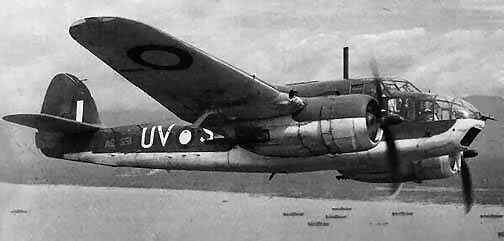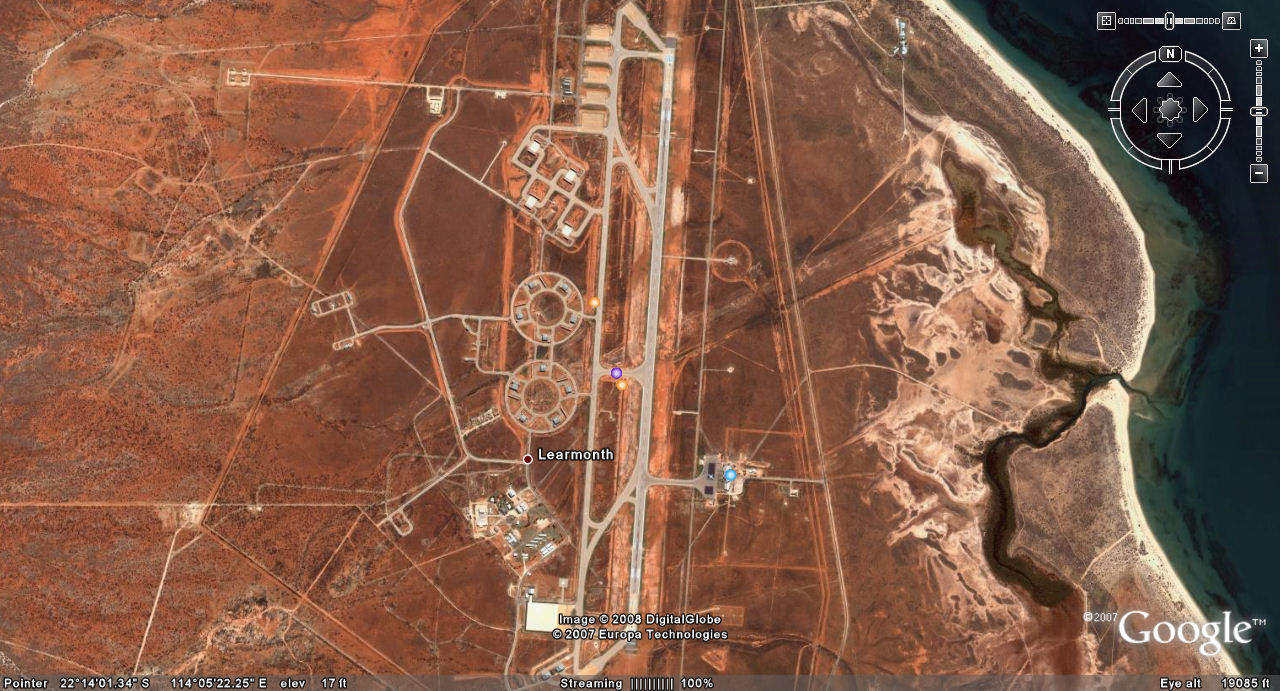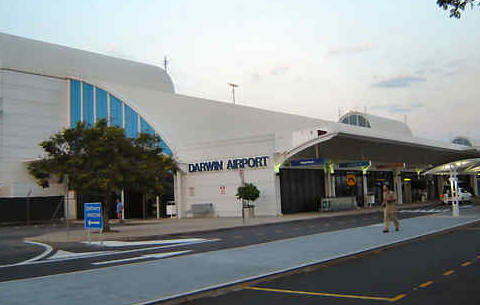|
|
|
LEARMONTH
Charles Page, who is an aviation and historical writer from West Australia, sent us this.
Proposed name change. In a dastardly move, the Shire of Exmouth, WA is proposing to change the name Learmonth Airport to Ningaloo Airport. This airport was named after Charles Learmonth who is the subject of the book "Wings of Destiny" which was written by Charles Page, and published by Rosenberg in April 2008. (The book can be pre-ordered from www.rosenbergpub.com.au or from HERE). Opponents to the name change are hoping they can gain enough support to prevent the name change and they say a simple letter or email to the Exmouth Shire CEO (with a cc to Charles Page at chazza@e-wire.net.au) would be appreciated. The address of the CEO is as follows:
Wing Commander Charles Learmonth DFC and Bar.
Charles Learmonth was killed on 6th January 1944, when
his Beaufort bomber crashed into the sea, some 18 miles north-west of
Rottnest Island, WA. The accident was caused by a jammed tail (elevator??)
trim, which
He had previously flown with the squadron in the search for HMAS Sydney in November 1941. In 1942 he married Perth girl, Marjorie Chapple. He became a well known flyer in New Guinea, where he flew the Boston attack bomber "She’s Apples", took part in the Battle of the Bismarck Sea, and rose to command No.22 Squadron. Charles’ DFC Bar citation stated: ‘He has displayed tactical ability amounting to genius’.
Official Naming of Learmonth Airport Learmonth Airport was in fact officially named. In 1942, a forward USN submarine base was established at Exmouth Gulf, and named Potshot. However, it proved vulnerable to Japanese air raids, and was mainly used as a refuelling point for submarines based at Fremantle and Albany. The base was bombed by the Japanese in May and September 1943. The first runway was unofficially constructed in March 1943 by Bluey Truscott’s No.76 Squadron, with the use of USN equipment. The airfield was later used by the Boomerangs and Spitfires of No.85 Squadron, and as a staging base for medium and heavy bombers, including the Liberators of No.25 Squadron. On 7th July 1944, the RAAF Western Area AOC, Air Commodore Ray Brownell, recommended naming a landing strip in Northern Australia in honour of Wing Commander Charles Learmonth DFC and Bar. Brownell declared, ‘I have always had the greatest personal regard and affection for Charles, owing perhaps to the many outstanding qualities he possessed, such as his sincerity, loyalty and ability. His fellow officers and men have always idolised and loved him. On 19th July 1944, the request to change the airfield’s name was approved by the Air Board and HQ Allied Air Forces, who directed that Potshot, Exmouth Gulf, be renamed Learmonth. On 22nd August 1944, the name change to Learmonth was officially promulgated in RAAF Memorandum 551. The West Australian commented, ‘It preserves the memory of an heroic and fearless young airman, who while diving to certain death at Perth’s doorstep, coolly sent out vital information over the radio that probably saved the lives of scores of other airmen.’ (Click picture for bigger view)
Learmonth Airport Dedications Marjorie Learmonth married Dr. Leslie Le Souef in 1947, and in 1956 the two drove north to Exmouth Gulf and visited Learmonth airfield. In 1970, the main runway at Learmonth was extended from 7,000 to10,000 feet.
The lengthened runway was officially opened on 15th December 1972 by Air Commodore Fred Robey, who had flown with Charles in 1940. Marjorie and Leslie were flown up in a RAAF Dakota, and after the ceremony and parade, Marjorie unveiled a memorial cairn to Charles Learmonth at the north end of the airfield. Then in 1987, Harry Craig, who had flown with Charles in New Guinea, passed through the terminal at Learmonth and was surprised to find no explanation as to why the airfield was so named. He suggested to Harold Rowell, of No.22 Squadron Association, that a memorial plaque be placed inside the civil terminal building. The plaque was first unveiled in Perth, by Marjorie Le Souef on 9th May 1988, at the Air Force Memorial Estate, Bull Creek, Perth.
The ceremony was attended by 250 people, and addressed by Harold Rowell, and Air Marshal Sir Valston Hancock, who said of Charles, ‘His name is already written into our history with the naming of Learmonth International Airport, but something more than that is needed as a record to indicate to future generations why an important airport bears Charles’ name … It is people like Charles Learmonth who provide a firm foundation for our future, and whose example will serve to inspire our young to great achievement.’ The plaque was later installed on a wall at the entrance to the civil terminal at Learmonth. On Tuesday 17th May 1988, Marjorie and Leslie Le Souef, and a party from No.22 Squadron Association flew from Perth to Learmonth for the dedication. A new Award winning terminal was opened by Hon. Hendy Cowan MLA on 3rd December 1999. The plaque was re-installed inside the new terminal.
Australian Placenames. In view of the fact that Learmonth Airport is one of the few places in WA named after an Australian, it seems curious that anyone would want to change it. Most towns and geographical features along the WA coast are named after early explorers, nobility, or patrons, whether English, French or Dutch. For example the town and Shire of Exmouth is named after an English naval hero. Yet, it is proposed to expunge the name of an Australian air force hero. In the Shire of Exmouth agenda 19 July 2007, it is stated, ‘Exmouth town is recognised and established, and it is not considered that there are any benefits to be received in considering alternatives.’
Learmonth Airfield was officially recognised and established as such in 1944, some 23 years before Exmouth township. Should it not also be exempt from change? It is hoped that Learmonth is not seen as a soft target, after previous opposition to changing the name Exmouth.
Logic of Airport Name Changes. It is difficult to understand the compulsive obsession on the part of some people to change the name of Learmonth Airport. It is as if they believe they have found the magic formula. Perhaps they have read a marketing research paper, probably from the USA, and they have taken that as their new mantra. The logic that airports have to be named after the local attraction is not based in reality. This assumption is the product of a fad that has its origins in the USA. In that country, name changing has caught like a disease, with the result that airport names have become so lengthy and unwieldy as to become virtually unusable.
Many lovely old iconic and heritage names have been replaced with long, boring and characterless names. The secret lies in association.
With publicity and familiarity, tourists associate
sights with a particular city or iconic airport. Thus Cairo is known for
the pyramids. Nobody in their right mind would want to call the airport
‘Pyramid’. Paris and Charles de Gaulle Airport are known for the Eiffel
Tower, Sydney for the Opera House and so on. In the case of JFK,
Strangely, Tourism WA uses this as an example why Learmonth should be changed. It is quite apparent that the argument for change is utterly without foundation. There is no reason that, with effective publicity, Learmonth cannot be automatically associated with Ningaloo, just as Darwin is associated with Kakadu. It is purely a matter of educating the travelling public, and of effective promotion and marketing.
Morality of Proposed Name Change. There appears to be no example in Australia where an airport named after a war hero has undergone a name change. Indeed, it is difficult to find anywhere in the whole world where this has been done. Such a move would set a dangerous precedent, that commemorations are not sacrosanct, and can be overturned by ‘badging, branding, marketing, and stakeholders.’ It is one thing to change a name that has little cultural or emotional significance, but there is something deeply disturbing, that what amounts to a war commemoration can be overturned in the name of expediency. I believe that such a move would bring great shame to WA.
It is no different to chipping someone’s name off a headstone or war memorial. Many people would be understandably upset at the purging of a war hero’s name, and the issue could be quite divisive. How quickly we forget the contribution and supreme sacrifice, others have made for us. In WA we go to great lengths to protect heritage buildings and sites. We protect everything from sewage pump houses to eyesore buildings. Yet, some people are willing to raze the names of our war dead. Does it not seem that our priorities are wrong?
Charles Learmonth died in the service of his country, in time of war. His sacrifice was in the name of all Australians, not just the Learmonth family, as is suggested in Tourism WA’s letter of 21 Nov 2007. All Australians should be offended by this cold-hearted proposal. Tourism WA has made an error in its proposal. It should not be seeking to trample the name of one of Australia’s heroic sons into the dust of history.
Conclusion In view of the foregoing, there would seem to be no benefit to a name change to the airport, rather the reverse. There are many other options to increase tourism. For example, a tourist area can be ‘branded’ unofficially, without having to go through controversial name changes. eg. Sunshine Coast, Far North Queensland, Coral Coast.
Actually, Exmouth and Ningaloo are already included in the Coral Coast brand, and there are websites, brochures, and newspaper ads to this effect. Skywest regularly advertises package deals to the Coral Coast. Perhaps the Ningaloo could be a brand within the Coral Coast. The finances required to change the name of the airport would go a long way to tourist promotion, improving and updating tourist brochures, and enhancing websites with links to Learmonth and Skywest, Exmouth, Ningaloo etc. Skywest could also further promote the connection between Learmonth Airport, and Exmouth and Ningaloo in its advertising and website. I
t is hoped that the Shire of Exmouth will focus instead on a sensible plan to promote the Shire, Ningaloo and the many other attractions. The Shire’s own motto, ‘embrace the past’ shows that it cares for its heritage. Learmonth Airport has the potential to become an icon in its own right, a recognised gateway, and a source of pride for the Shire and WA.
|
|
|
The word tyre originated from the wheels that were used on horse drawn carts. In those days the outer rim was the device that ‘tied’ the spokes together. You know it makes sense |
|
|
|
 forced
the aircraft into a fatal nose dive. Charles Learmonth calmly described
the condition over the radio, and the cause of the many Beaufort crashes
was corrected, thus saving many lives. At the time of his death, Charles
Learmonth was C.O. of No.14 Squadron, based at Pearce.
forced
the aircraft into a fatal nose dive. Charles Learmonth calmly described
the condition over the radio, and the cause of the many Beaufort crashes
was corrected, thus saving many lives. At the time of his death, Charles
Learmonth was C.O. of No.14 Squadron, based at Pearce.
 the
airport is practically a synonym for New York, as was Kai Tak with Hong
Kong. Incidentally the airport’s name derived from Mr. Kai and Mr. Tak,
who owned the land on which the airport was built. The name has nothing to
do with any local attraction, yet has become an icon. When you fly into
Los Angeles, you don’t land at Disneyland Airport, but you know the
attraction is not far away. Closer to home, can you imagine Darwin Airport
being renamed Kakadu airport, yet most tourists that go through Darwin
airport go to Kakadu. One could go around the world with such examples.
the
airport is practically a synonym for New York, as was Kai Tak with Hong
Kong. Incidentally the airport’s name derived from Mr. Kai and Mr. Tak,
who owned the land on which the airport was built. The name has nothing to
do with any local attraction, yet has become an icon. When you fly into
Los Angeles, you don’t land at Disneyland Airport, but you know the
attraction is not far away. Closer to home, can you imagine Darwin Airport
being renamed Kakadu airport, yet most tourists that go through Darwin
airport go to Kakadu. One could go around the world with such examples.